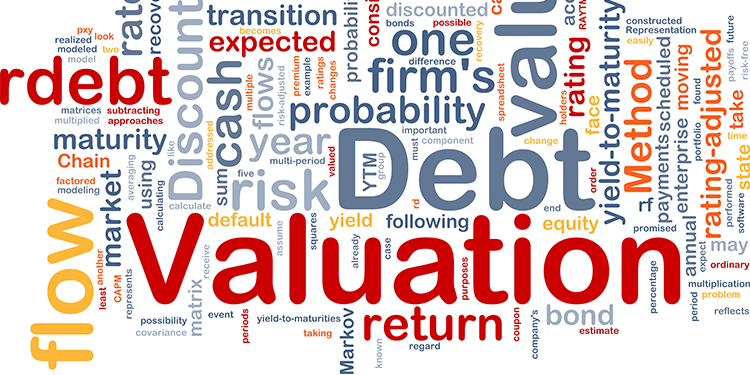
Business Valuation: Preparation, Strategic Approaches, and Value Enhancements
The value of a business is an important tool not just for selling or mergers but also for making medium and long-term plans accordingly. Whether you are considering selling your business, need a new round of funding, or a business loan, you need to be aware of your business valuation.
Tracking your business’s value over time allows you to tactically improve and ensure the business is in good shape to sell, at an acceptable value to support your next steps.
Preparing for a Valuation
If you are looking for the approximate value of your company, then you can evaluate your business by using comparable factors. However, if you are interested in getting a formal business valuation, it’s necessary to consult an expert. This is where working with a business broker or business appraiser might help. Many business brokers also include valuations as part of their services.
Here is the step-by-step process of a business valuation:
Collect all your business documents
Every business valuation depends largely on the business’s finances. For an accurate valuation, you will need financial statements and business tax returns from the last three years of your business. Your financial statements should include cash flow statements, a list of debts, annual turnover, and profit and loss statements. Go over these documents to ensure that they are accurate and up to date.
It's also important to gather legal documents such as leases and insurance policies. Company registration papers such as business name certificates, licenses, permits, and any other papers that demonstrate you comply with government requirements, must be included in your evaluation.
Additionally, if you have any ongoing contracts with insurers, vendors, creditors, and clients, make sure you collect them too. If you are looking for a business loan or want to sell your business, you will need all these documents along with your financial papers.
List additional intangible assets
Tangible assets of your business, such as property, equipment, and cash, should be listed on your balance sheet. You must also list out other intangible assets like patents and copyrights. If you have any business goodwill and intellectual property to your name, remember that these can improve your business valuation tremendously.
Positive client testimonials, social media engagement, high SEO ranking, loyalty club, and an extensive email list can help attract and retain customers. These assets may not show up on your balance sheet, but they can enhance your business valuation.
Other documents
Certain documents may not reflect in your financial statements, but they still can be vital for valuing your business. Details regarding your direct and indirect competitors, and how your business stands apart from them could be important to demonstrate your competitive advantage to potential buyers.
Previous and current sales figures and forecasts could be instrumental in forecasting future sales and business growth. Information regarding your business history, including when it was started and any changes in location or ownership, could also be important.
You may also want to include business documentation such as marketing and customer service procedures, and your employee roster. Including your business plans, including marketing, financial projections, emergency management, and sales and growth forecasts are also a good idea. You can also include other details such as your business hours and whether you own or lease the business premises.
Employee details such as skills, experience, job description, work history, pay rates, and performance reviews could also affect the value of your business. You may also include customer information and marketing and promotional activities.
Research Your Industry
Having a good understanding of your industry helps you in identifying your business’s potential. This in turn can help you value your business correctly. It’s necessary for you to study your industry trends and forecasts to know just what your company may be worth in the future.
There are several methods used for valuing a business. If you are selling your business, take the time to research as much as you can regarding companies in your industry. Compare businesses that are of a similar size and which resemble your business.
Consult qualified business brokers to gain their unique expertise on your business, versus comparable businesses within your industry.
Study the comparable reports of businesses available on BizQuest and learn about their financials, strengths, weaknesses, and valuations.
Methods of Valuation For Small Businesses
There are many methods of business valuation based on earnings, balance sheets, future projections, and recent sales of comparable businesses. Different methods are used in different circumstances, and each method has its merits.
Here are some of the most popular methods for business valuation:
Discounted cash flow method
The discounted cash flow valuation method estimates the value of a business depending on its expected future cash flows. It attempts to determine the current business valuation based on the projections of how much cash it may generate in the future.
This method is ideal for companies that are expecting substantial growth in the next few years. It takes into account “the time value of money” and can be helpful if you are comparing various investments. The concept of the time value of money assumes that the value of a dollar today is more than the value of a dollar tomorrow. It is appropriate for situations where you are paying money in the present with the expectation of receiving more in the coming years.
The calculation for the discounted cash flow method can be a bit complex, but you can always seek help from a professional valuation expert. Luckily, there are many online calculators also available that you can use. However, you should be aware of what numbers to input to arrive at an accurate valuation.
For starters, you could use the cash flow statements of your business, along with forecasted cash flows, if you have created them. You will also need the discount rate and the WACC (weighted average cost of capital), which is another bit of a complex calculation. WACC shows a company’s blended cost of capital across all sources, including both equity and debt.
You would also need to decide the number of years’ worth of cash flow you want to use in your calculations. The number could depend on how you foresee the cash flow projections in the coming years. If you are trying to compare DCFs for more than one investment, you will need to use the same number of years for each.
Market-based valuation method
In the market-based valuation method, the current value of your business is determined by the sale and purchases of similar companies in the same industry. This approach helps you determine the appropriate selling or purchase price of a business based on the local market.
If you run a small business, you may not have too many comparables ("comps") in the market. However, if you are planning on buying or selling a business, you should look at a few comps. You could seek help from a professional business broker or appraiser who may have a list of similar companies. If the comparable companies are not in your location, the appraiser may still be able to find them at other locations and adjust according to the area.
The market-based valuation method can be useful for any business, provided they gather adequate, relevant data on which to compare their business. This approach could be especially advantageous for businesses and industries that are rapidly growing.
Capitalization of Cash Flow method
The capitalization of the cash flow method also calculates the future profitability of a business based on the business’s cash flow, annual return of investment, and its expected value. The difference between discounted cash flow method and the capitalization of the cash flow method is that the DCF method accounts for financial fluctuations in the business’s future. In contrast, the CCF method assumes that the calculation for a single period will continue in the future. Hence, the CCF method is ideal for established businesses with stable profitability.
For calculating the business valuation using the CCF method, you will need to divide the cash flow of a particular period by the capitalization rate. The period you use should be one of sustainable and recurring cash flow from the business. If there were any unexpected expenses or income events, you may want to make adjustments and not include them in the results.
The expected rate of return is the capitalization rate of the business. This is the rate of return that you could expect to earn if you buy the business.
The CCF is a suitable approach for stable, mature companies that do not see much fluctuation in their cash flow.
Seller’s discretionary income method
The seller’s discretionary income method is specifically made for the valuation of small businesses. The other approaches can be used for both small and large businesses, and public companies.
If you are planning on purchasing a small business or selling your own, this could be the most appropriate method. If you are buying a business, it can help you figure out how much you can expect to earn from it each year.
For calculating the value of your business using the seller’s discretionary income method, you will first need to determine how much cash is needed to operate the business.
You can use your financial statements to calculate your earnings before interest and taxes. You will then need to add the owner’s income and benefits, such as medical insurance. You will also need to add business expenses that are non-recurring, non-essential, and non-related, such as travel and consulting fees.
The SDE business valuation approach is mostly used during the sale of a small business. It is quite common for disagreements to arise between the seller and the buyer regarding the expenses that need to be added back to arrive at the value. For example, earnings like personal travel or donations to charitable institutions or club memberships are discretionary expenses. Typically, these expenses cause problems during the sale of a business. Both the seller and the buyer would need to agree to include these expenses in the final valuation before the sale moves forward.
Improving Your Valuation
All business owners desire a high valuation for their business. However, your business value cannot be increased overnight. The best way to improve your valuation is to focus on key drivers that determine the present and future value of your business. When you focus on the right areas, you also significantly change the way your business is perceived by prospective buyers.
Here’s how you can improve your business valuation:
Improve cash flow and margins
Cash is king. More appealing than a profitable business is a profitable business with cash reserves on hand. By focusing on margins and reducing expenses, you can increase cash flow, and in turn, maximize the value of your company. When you have cash reserves, it shows that you run a stable business, which is valuable to a potential buyer.
Develop systems and procedures
Buyers are attracted to companies that have effective operations in place. By developing systems and procedures, you can identify problems as soon as they arise and address them quickly, increasing the operational efficiency of your business. With an efficient operations system, you spend less time resolving problems and more improving your business and its value. Additionally, a business with well-documented procedures is easier to transfer to a new owner with less interruption.
Show steady and consistent growth
Buyers look at previous financial data when determining the profitability of a business. When they see steady and consistent growth instead of sharp spikes in income, it makes your business even more valuable.
Some of the ways to generate consistent business growth are:
- Define your target audience & create a buyer persona.
- Align your goals in accordance to each buyer persona and stage of buyer lifecycle they are in.
- Communicate procedures and policies to every member of the organization and get buy-in.
- Do a SWOT analysis of your own company and your competitors to identify what gaps you may have.
- Restructure your marketing operations & business procedures accordingly to enable business growth.
Reduce dependency on the owner - You
The owner is an indispensable part of a small business. However, the less dependent the business is on the owner, the more value it holds for prospective buyers. When a business has a strong staff and management team, plus an established system to run the day-to-day operations, it automatically improves the value of a business. If your business is dependent on a few key employees, it could be viewed as a risky proposition by potential buyers. The same concept applies if a large chunk of your revenue comes from a few customers. Reducing dependency increases the value of your business.
As business owners, we can actively increase our business valuation if we follow the above steps. If you require additional assistance or expert insights about business valuation, you can hire a business broker to help you increase your company valuation.





